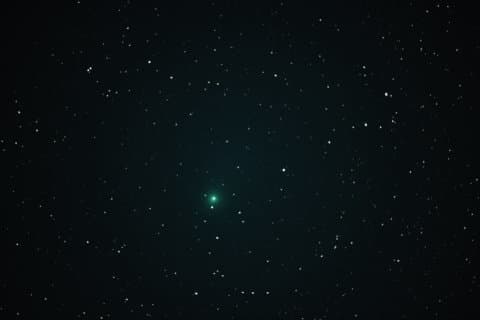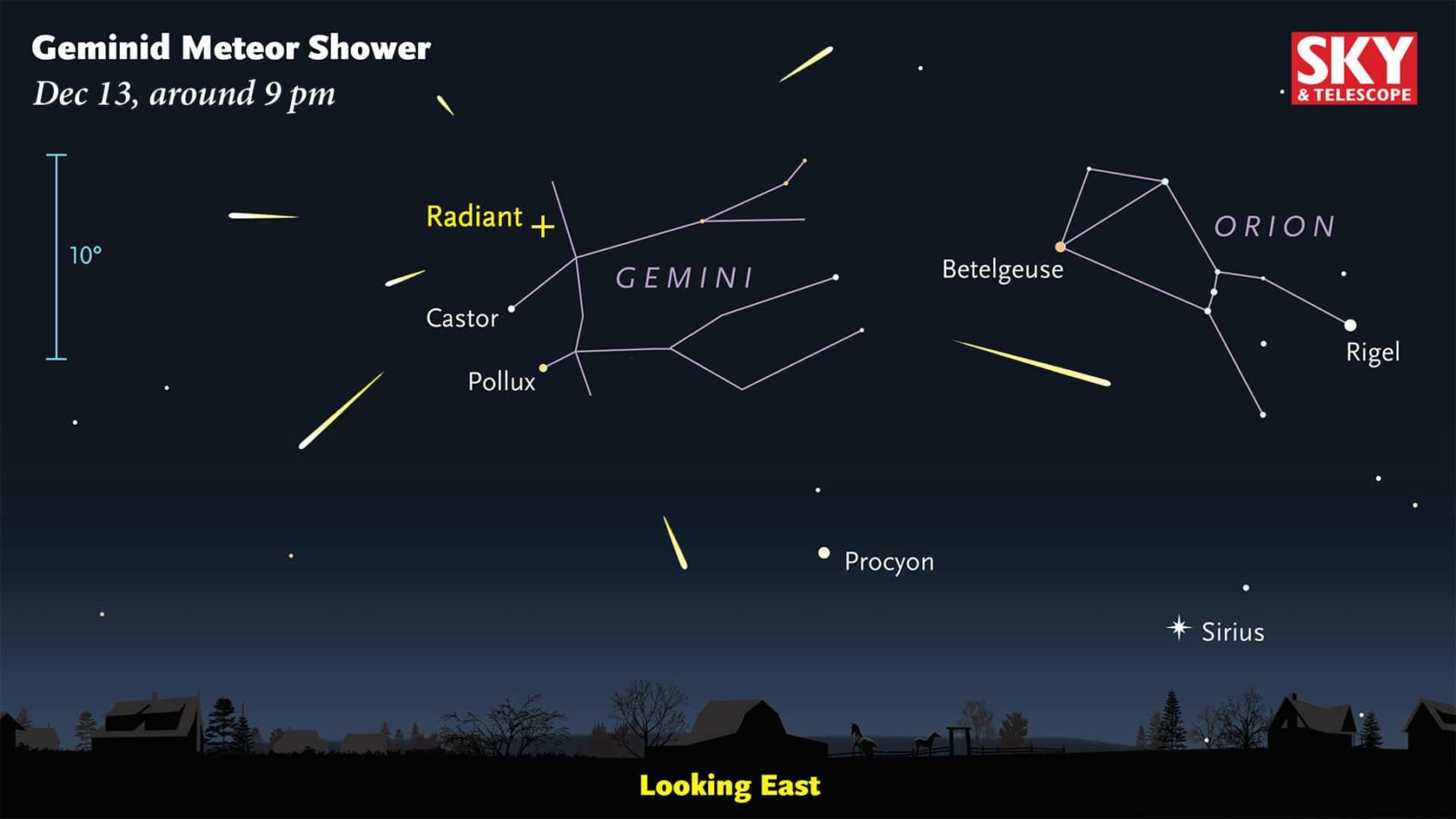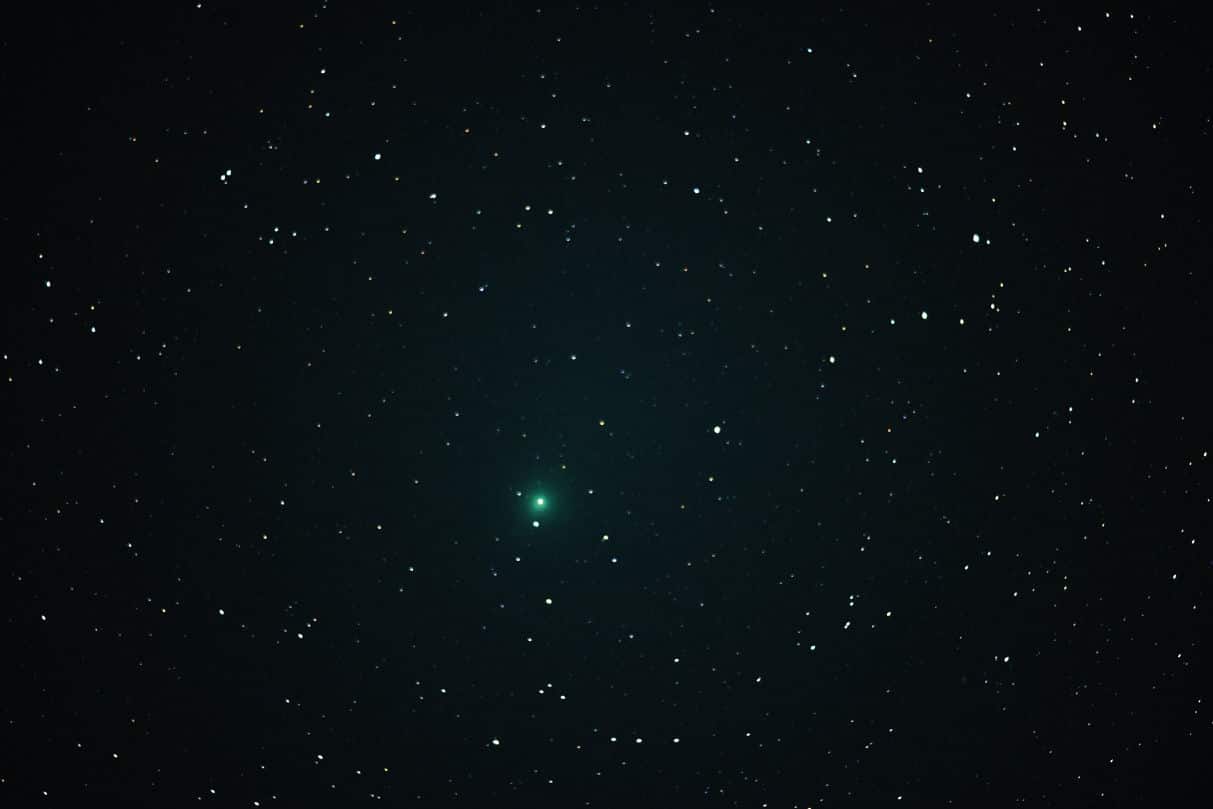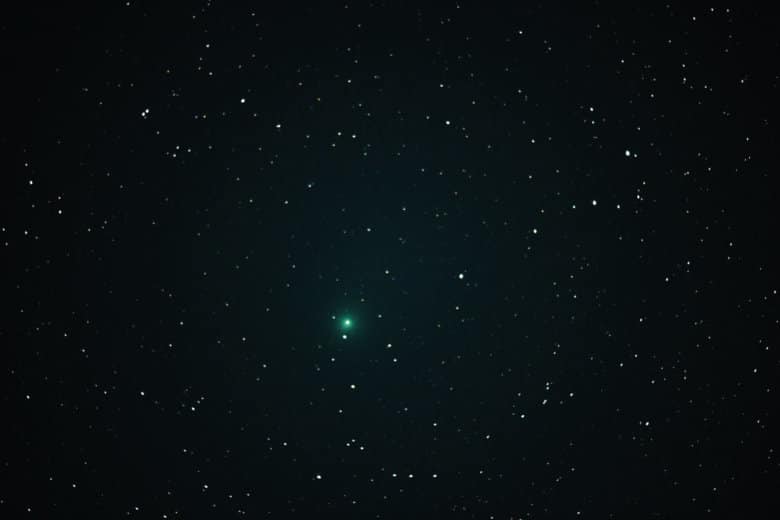
WASHINGTON — Hey DMV: The night of Dec. 13-14 will see the predicted peak of the annual Geminid Meteor Shower. If the weather cooperates, this is a meteor shower worth getting out to see, starting at about 7 p.m. EST all the way through dawn.
The Geminids is the best meteor shower of the year and I am not the only one who thinks so. It reliably produces 75 to 100 meteors per hour in a dark sky, and many of them are bright enough to be classified as fireballs — a meteor that is brighter than the planet Venus. It’s one of the major meteor showers where you can see a good number of meteors starting in the evening and not just the hours before dawn — in other words, all night long.

It is possible that the two fireballs spotted on Monday night in our skies could have been Geminids.
While Thursday night is the predicted peak of the 2018 Geminid Meteor Shower, you can see Geminids from Dec. 12-16 — just not as many as during the peak. Each year at this time, our planet encounters a debris stream of rock particles made by Asteroid 3200 Phaethon as it orbits the Sun. The Geminids is the only major meteor shower caused by a rock comet — all others are due to cometary debris (except the Quadrantids, which are caused by an asteroid).
As Earth moves in its orbit around the sun, it collides with this rocky debris stream and the particles hit our atmosphere at 22 miles per second (79,000 mph) to become “shooting or falling stars.” It is thought that the Geminds are brighter than other meteor showers because they involve larger and heavier debris than normal cometary dust and penetrate deeper into the atmosphere.
The best place to see the Geminids is anywhere away from lights and obstructions such as trees and buildings. If you are a city dweller, you still may see the brightest Geminids as long as you are not staring into a streetlight or nestled in among tall buildings. Out in the country or along the beach is the best place to be.
The moon won’t be a major factor to spoil our view but it is best to keep your back to the moon when looking for Geminids. This helps you to see fainter meteors and preserves your night vision.
You do not need any equipment or know how to enjoy this sky show. You just need to find a place where you can put a lounge chair or blanket to see as much of the sky as possible. If you have the time and inclination, start watching for Geminids at 7 p.m. by looking low in the east for the constellation Gemini, for which this meteor shower is named. A meteor that is part of the shower can be traced back to Gemini. Sporadic meteors that are not part of the shower can be normally seen during the night as well.
As Gemini rises higher and higher in the sky, more and more meteors should become visible.
The shower will continue all night before dawn. The key to watching the shower is being comfortable — in other words, warm. The Geminids can appear anywhere in the sky, but looking straight up gives you the widest viewing area — this is where a lounge chair or blankets come in handy. Enjoy the shower with family, friends or your significant other. Some music, food and beverages are an added plus.
The weather may cloud us out in the WTOP viewing area for this sky show. Our best bet is to check the sky to see whether it is clear or even partly cloudy when you want to go out to look for Geminids. If it is cloudy, you can still observe the Geminid Meteor Shower online on sky-live.tv’s livestream and on their YouTube.
You can also LISTEN to the Geminid meteor shower by going to livemeteors.com. A meteor in durator will sound like a distinct “ping” and it can be short or long in duration – they are pretty distinctive from the background hiss. You can keep tuned in all night in the comfy warmth of your house … not a bad fall-back plan.
A comet is currently gracing our skies but will be harder to see due to the brightening Moon. Comet 46P/Wirtanen is visible from dark skies and will be closest to the sun and Earth this week. I observed it recently and it was dim. I couldn’t quite make it out visually, but I saw it in binoculars and photographed it.

I know it’s cold and maybe cloudy, but it’s worth trying to see the best meteor shower and brightest comet of the year.
Here’s to clear skies and a lot of Geminids!
Follow me on Twitter @SkyGuyinVA and my daily blog.








